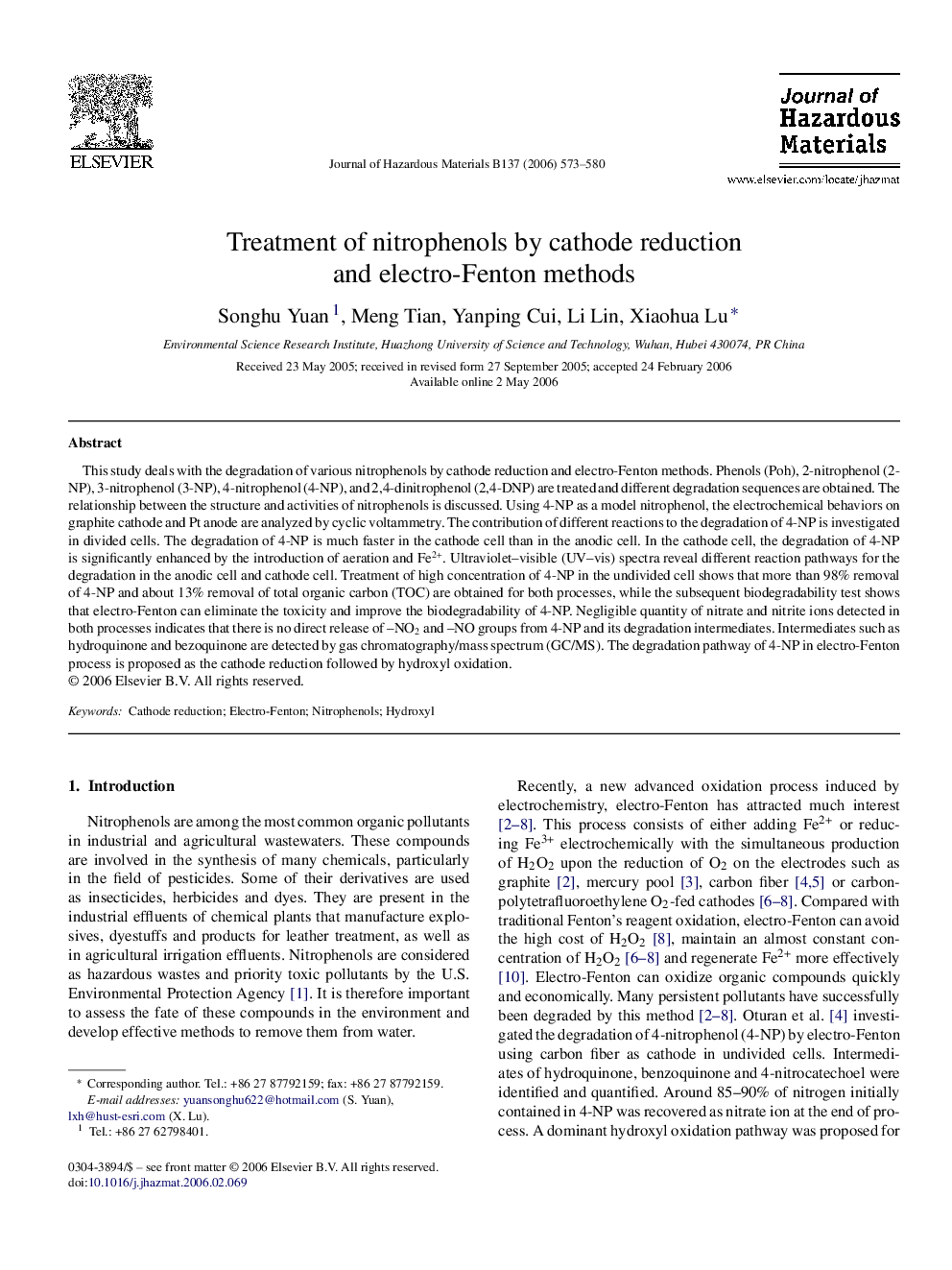| Article ID | Journal | Published Year | Pages | File Type |
|---|---|---|---|---|
| 585486 | Journal of Hazardous Materials | 2006 | 8 Pages |
Abstract
This study deals with the degradation of various nitrophenols by cathode reduction and electro-Fenton methods. Phenols (Poh), 2-nitrophenol (2-NP), 3-nitrophenol (3-NP), 4-nitrophenol (4-NP), and 2,4-dinitrophenol (2,4-DNP) are treated and different degradation sequences are obtained. The relationship between the structure and activities of nitrophenols is discussed. Using 4-NP as a model nitrophenol, the electrochemical behaviors on graphite cathode and Pt anode are analyzed by cyclic voltammetry. The contribution of different reactions to the degradation of 4-NP is investigated in divided cells. The degradation of 4-NP is much faster in the cathode cell than in the anodic cell. In the cathode cell, the degradation of 4-NP is significantly enhanced by the introduction of aeration and Fe2+. Ultraviolet-visible (UV-vis) spectra reveal different reaction pathways for the degradation in the anodic cell and cathode cell. Treatment of high concentration of 4-NP in the undivided cell shows that more than 98% removal of 4-NP and about 13% removal of total organic carbon (TOC) are obtained for both processes, while the subsequent biodegradability test shows that electro-Fenton can eliminate the toxicity and improve the biodegradability of 4-NP. Negligible quantity of nitrate and nitrite ions detected in both processes indicates that there is no direct release of -NO2 and -NO groups from 4-NP and its degradation intermediates. Intermediates such as hydroquinone and bezoquinone are detected by gas chromatography/mass spectrum (GC/MS). The degradation pathway of 4-NP in electro-Fenton process is proposed as the cathode reduction followed by hydroxyl oxidation.
Keywords
Related Topics
Physical Sciences and Engineering
Chemical Engineering
Chemical Health and Safety
Authors
Songhu Yuan, Meng Tian, Yanping Cui, Li Lin, Xiaohua Lu,
